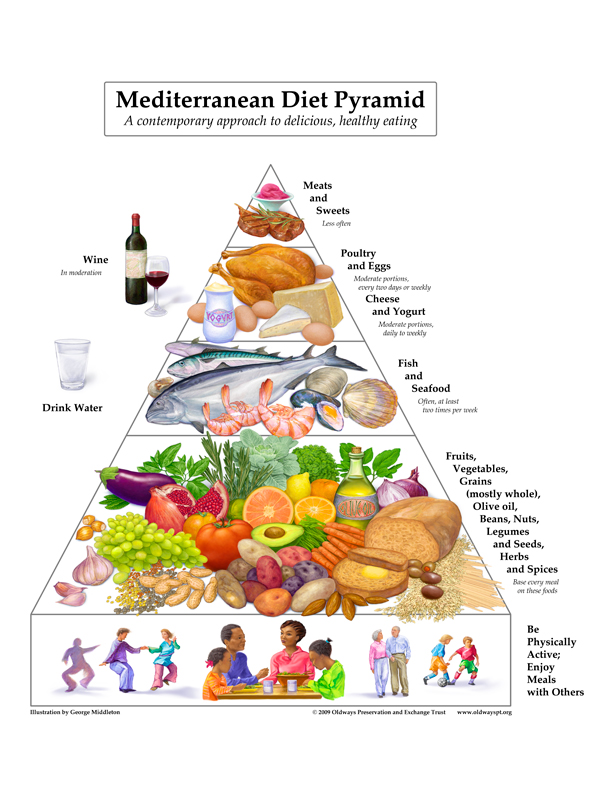Written by Jill Weisenberger, MS, RD, CDE
It seems fitting that May is Mediterranean Diet Month. May is the month for visiting farmers markets. Finally! After a few dreary months of dreary fruits and vegetables, the markets in Williamsburg, Yorktown, Newport News and elsewhere in Hampton Roads offer up a bounty of fresh and delicious harbingers of good health. And that is much like the meals served in the countries surrounding the Mediterranean Sea. A standout of a Mediterranean-style diet is its fresh taste. Meals are seasoned and prepared in ways that make flavors pop. They aren’t hidden under thick layers of cheese, heavy sauces or deep-fried breading. Rather food is seasoned with herbs, spices, citrus, flavorful vinegars and high-quality olive oil. I love this time of year when I can find 10 or so fresh herbs in my backyard.
There’s no denying the benefit of a following a Mediterranean-style diet. Researchers find that such a diet is linked to less cognitive decline with aging, less heart disease, improvements in metabolic syndrome, reductions in some types of cancer, and still more health benefits. I often bring in components of a Mediterranean-style diet when working with my patients with diabetes, high blood pressure, high cholesterol and more. Inevitably, we see good results. And a side benefit is that the food tastes great.
Each country surrounding the Mediterranean Sea has access to different locally grown foods, and the people have different preferences based on culture. However, there are many similarities as is depicted in the Mediterranean Diet Pyramid. In general, you’ll find the following:
- Whole and minimally processed foods are selected over highly processed foods.
- Olive oil is the main source of fat in cooking. Nuts also provide a good portion of the fat consumed.
- Legumes such as beans and lentils are eaten a few times each week. So are fish and shellfish.
- Both cooked vegetables and salads are eaten daily, often even at breakfast.
- Fruit is consumed daily. It’s a common dessert.
- Wine is frequently consumed with meals.
- Red meat, including veal, pork and lamb, are eaten just a few times per month.
- Sweets and sugary drinks are consumed only now and then.
If you’d like to start eating more like a Mediterranean, pick one or two of these dietary practices to get started. For me, well I have just one big area of discrepancy. As a lover of most sweets and all things dark chocolate, I rarely have fruit for dessert and I often have something far less nutritious. In honor of Mediterranean Diet Month and to honor my own health, I think I’ll eat fruit for dessert at least one evening per week. It may not sound like much, but it’s a start. How about you? What will you do this month? If you’re not sure where to start, check out some of the recipes at Oldways (www.oldwayspt.org). I haven’t seen it yet, but Oldways has a new book, Oldways 4-Week Mediterranean Diet Menu Plan. They’re offering 10% off during May.


